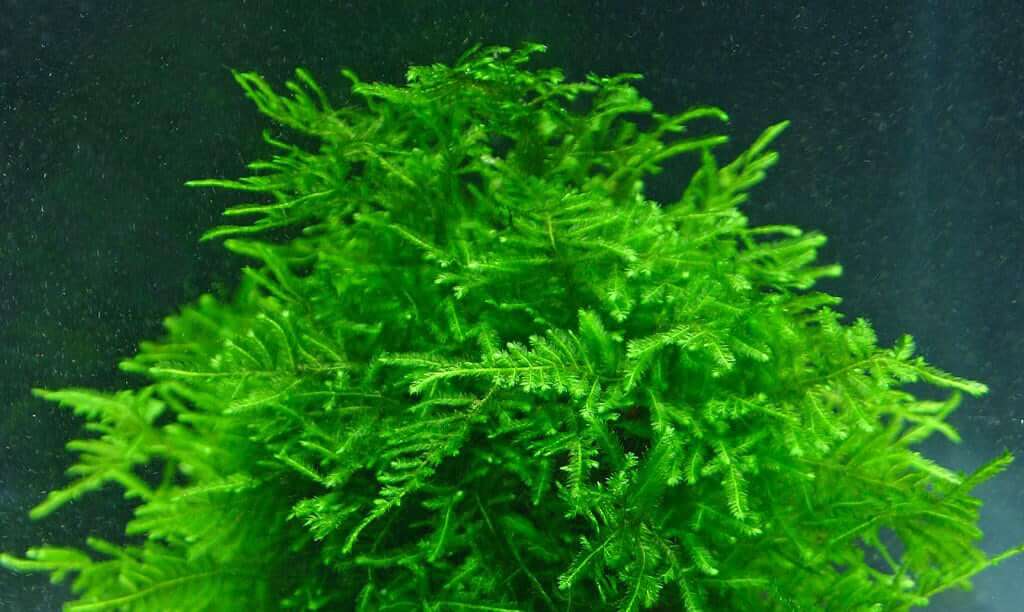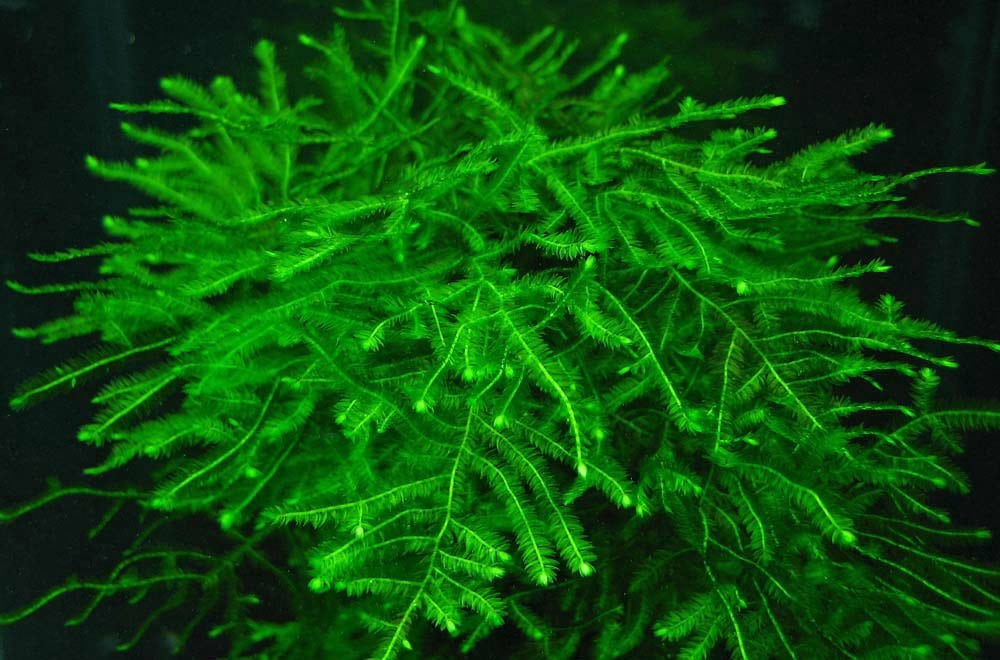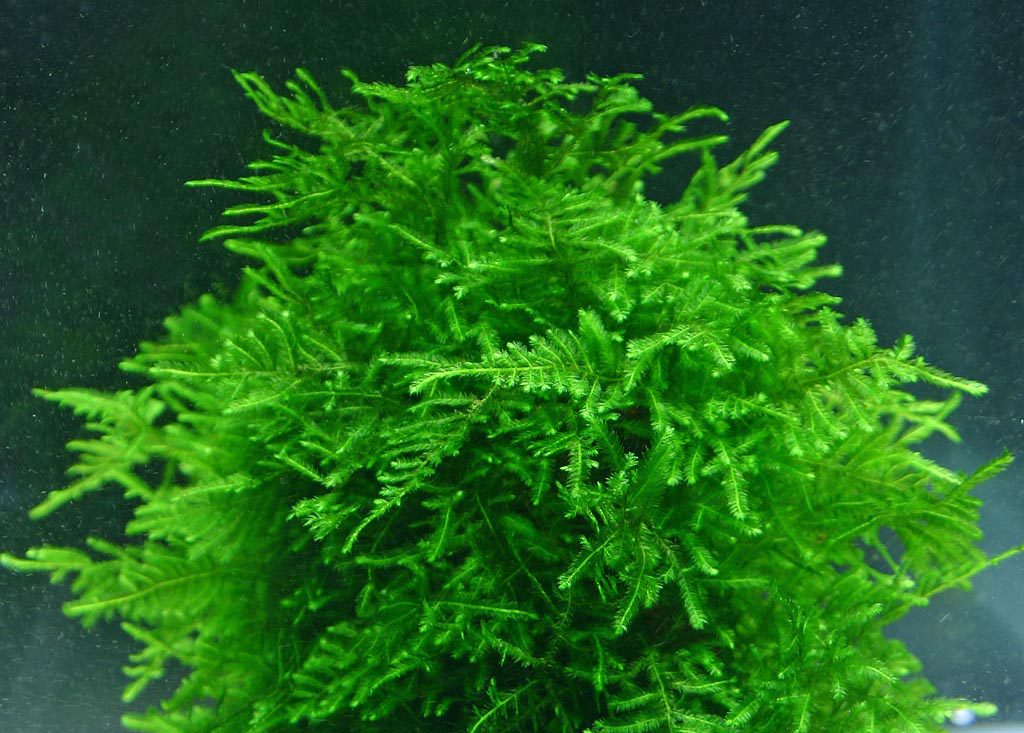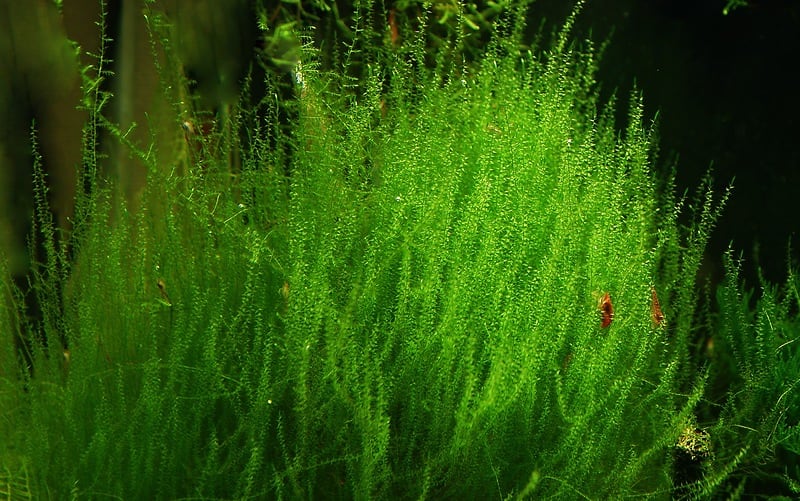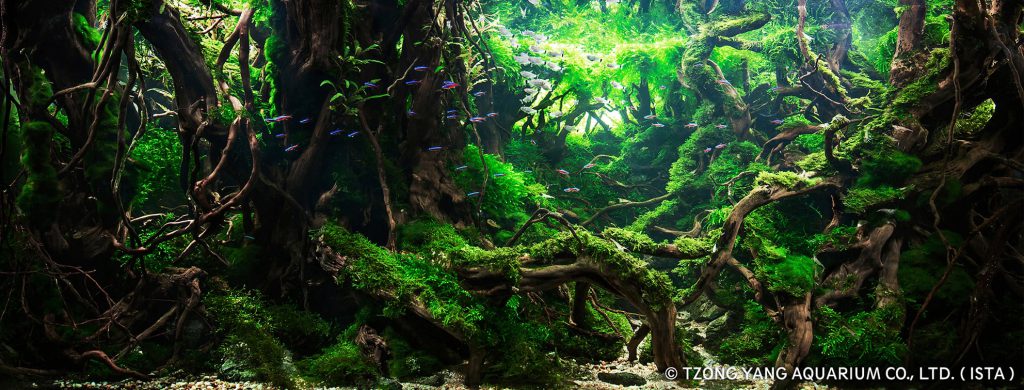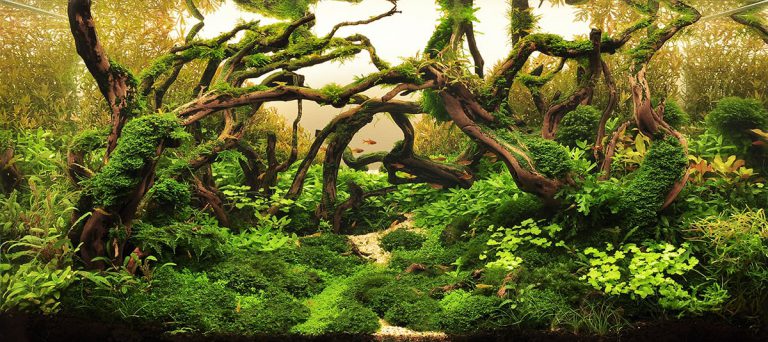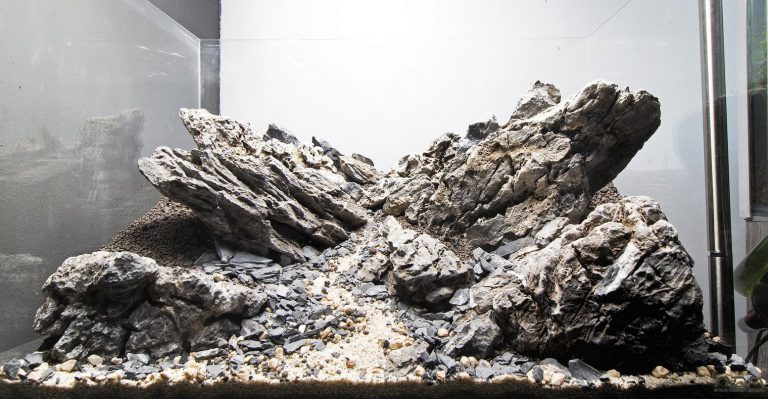There are so many ways to use aquatic moss in your aquarium and mosses should definitely be an area that you have really planned for in your aquascape design. Mosses spread, so if you are looking for a floor or featuring covering plant, then considering the use of an aquatic moss is a great start.
Mosses can help to soften edges of other aquarium features and enhance the natural feel of your design. They come in all manner of shapes, colors, and growth habits and can be used to create green lawns, or to grow over rocks, driftwood, or even to grow towards the water level! Aquatic mosses are generally very easy to propagate so are suitable for aquascapers of any experience level.
Why Grow Aquatic Moss?
Aquatic mosses are generally chosen for their aesthetic qualities, but they don’t just look great; they can also contribute to improving water quality. As photosynthesizing plants, aquatic mosses absorb nutrients in your aquarium water, including nitrates, from the water column.
Where other plants require high light levels to accomplish this, or a regular fertilizing regime, aquatic mosses are effective nitrate removers without high light levels or fertilizer.
Considering Using Aquatic Moss in Your Planted Aquarium?
Water Temperature
One of the most important areas to remember when propagating aquatic moss in your planted tank is that mosses prefer moderately cool water temperatures, so you should set your heaters in the 21-24oC range.
The best way to encourage mosses in your aquarium to look great and to grow quickly is to keep them cool. Some aquatic mosses, however, are known to be able to adapt to slightly higher temperatures. There are some mosses that, with no apparent harm to themselves, will grow in a whole range of temperatures.
Mosses Easily Attach to Various Surfaces in Your Planted Tank
Give the rhizoids (slender root-like filaments that are used for attachment and nourishment) of mosses the opportunity to attach to a rough surface, and they quickly will!
If you want to, and or have the time, many aquatic mosses are quite capable of self-attaching. You simply ‘show’ the moss a growing surface, place them together in your aquarium, then the fronds will, sooner or later, attach themselves to the growing surface. If you don’t want to wait for this to happen, then there are other simple and effective ways to achieve the same effect.
One of the best ways is to spread the aquatic moss over the surface you wish to cover, and then use fishing line or black thread to attach it. These methods of attachment will be visible to begin with, but the aquatic moss will grow over them very quickly.
Some experts in this field recommend using 100% cotton thread as it will, ultimately, dissolve and disappear. If you are using any method of attachment, please do consider the other life forms in your aquariums. Fish especially may get stuck or injure themselves on loosely tied threads, and may attempt to eat loose pieces once the knots have dissolved. Keep an eye on your aquarium and make any adjustments when they need to be made.
A new and trending method of attaching aquatic moss to driftwood or aquascaping rocks, is using water-safe glue. Jurijs, an aquascaper from Germany, has a cool demonstration on this:
Pruning and Lighting
In general, aquatic mosses will grow in most lighting situations. The hardier mosses can actually thrive in lower ambient lights. Lighting is an especially important issue to consider when it comes to aquatic moss growth.
If you have chosen different types of moss for your aquascape, then make sure you know and understand how each of these mosses grow. If one aquatic moss grows much more vigorously than the others, the new growth in the more vigorous moss can and will overshadow the slower growing mosses, thus preventing them from receiving light. This will mean that the slower growing mosses will die if you do not spot and rectify this occurrence very quickly.
The simplest way to deal with this, if you want to use aquatic mosses that have different growing patterns, is to prune the faster growing aquatic moss before it becomes an issue, or move clumps of it to different parts of the aquarium. It is good practice to prune mosses regularly as this will help to prevent the mosses becoming stringy.
The trimming is easily done using special aquascaping scissors, a very handy tool that is very popular nowadays between professional aquascapers.
Top 3 Aquatic Mosses
1. Taxiphyllum barbieri – Java Moss
The most common aquatic moss grown in an aquarium is the Java Moss, Taxiphyllum barbieri. There are plenty of reasons for this. Using Java moss creates a stunning natural aquascape and can be tied on to all manner of other features in your aquarium; rocks, driftwood and other plants – the aquatic moss will be quite happy be attached to them all.
This aquatic moss is self-attaching too, so your aquascape doesn’t need any artificial ties if you have the time for it to make the attachment. The other main reason why you’ll love Java Moss is that it is (almost!) impossible to kill. It will happily grow in aquariums with high lighting levels to aquariums with solely ambient light.
2. Taxiphyllum sp. “Peacock” – Peacock Moss
This type of aquatic moss is a fern-like plant. It is creeping and small with flattened branches. These branches have fronds that spread out and are conspicuous because of their iridescent blue-green color. Peacock moss tends to prefer growing in cooler waters of around 25 degrees Celsius.
At higher temperatures, the peacock-shaped fronds that it gets its name from are lost. Aquascapers turn to Peacock Moss when they are looking for an aquatic moss that will help them to achieve a ‘gentle’ look for their aquascape.
3. Leptodictyum riparium – Stringy Moss
Aquascapers are drawn to the Stringy Moss, as it is a very variable moss and can take many different forms when it is grown submersed. In the wild you can find the Stringy Moss in the northern hemispheres.
Areas from Europe to China to North America all are known to be places where this moss thrives. The Stringy Moss grows more slowly than other mosses, but is straightforward to grow and cultivate. One of the main reasons that Stringy Moss is loved by aquascapers is for the free-growing and slightly wild looking stems that grow upwards in a stringy style.
The effect of growing the Stringy Moss in your aquarium can look visually stunning with its fine stems and leaves. This is a great moss to use if you are looking to create an illusion of movement or flow in your aquarium.
When you are designing your aquascape, think about the areas that will be enhanced by the use of aquatic moss. Consider the different types of moss and their growing patterns. Reflect on the aesthetics you are looking to achieve in your completed aquascape. With all of these in place, your aquascape will shine!
Here are some ways in which aquatic moss is usually used in aquascaping nowadys:
Enjoyed this article? Spread the word by sharing it with your friends!

